Addicting and easy to handle, this Homemade Pie Crust will be your go-to pie crust recipe. Despite how you use it – hot pies, cold pies, or hand pies – you’ll get a delicate flaky holding vessel every time! If you are interested in an ALL BUTTER Pie Crust, I have that recipe here.
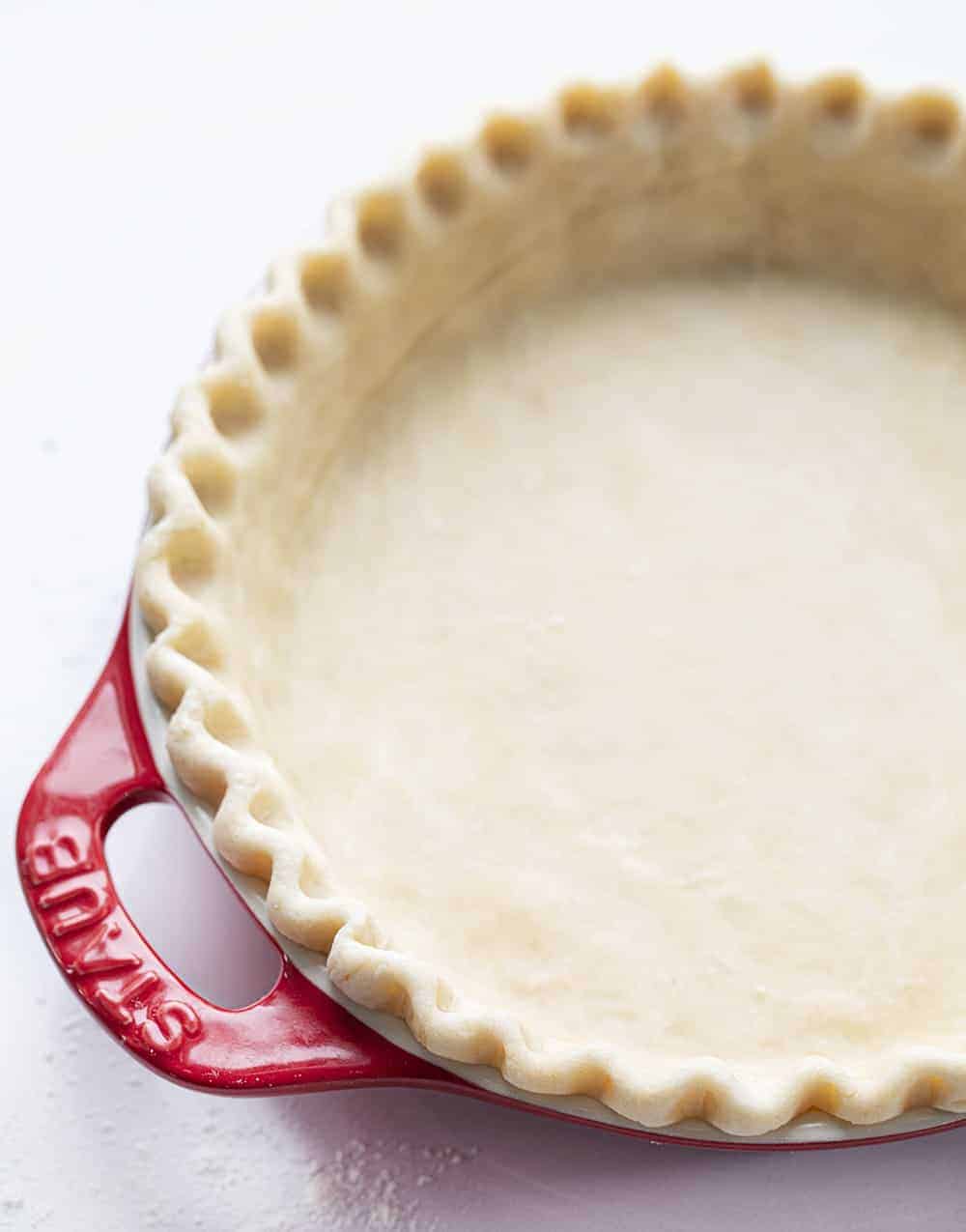
Homemade Pie Crust
This homemade pie crust is a no-fail pie crust that is my go-to crust for everything that needs, well, a crust. It is light and flaky and perfect for anything from apple pies to pot pies to Pop Tarts! The recipe is super simple, and I know you can do it!
Now, I know that everyone has their favorite homemade pie recipe. And yes, mine happens to be with shortening.
Can I Substitute Lard?
Yes! Let me explain. Shortening is 100% fat, which helps pie crusts (like this one) and pastries turn out so flaky and crumbly. And because shortening is all fat, it is hard to make substitutions. If you do have to substitute for shortening, your best bet is lard because it is also 100% fat. If using lard in place of shortening, use 2 tablespoons less of lard for every one cup of shortening.
Can I Use Margarine?
So, can you use butter or margarine in place of shortening or lard? It’s not your best bet in this recipe. Butter is 80% fat, which is close but made of water, which may keep the crust from being light and flaky. Margarine has been used to replace shortening because it is also made with vegetable oil, but it can be as low as 35% fat.
Making any substitutions in recipes can have an effect on the final product.
How to Transfer Rolled Dough to the Pan
There are two methods I use often.
- Once your dough is rolled out on the floured surface, you simply roll it onto the rolling pin and then unroll it into your pie plate. Do not stretch the dough to fit the pie pan, it will shrink from the edge if you do. Just let it naturally fall into the pan and press down gently if needed.
- The second method is folding. With cold hands, fold the top half of the dough over the bottom half, creating two layers of dough. Fold this in half again, this time folding the left half over the right. Transfer to pie pan and place in the bottom (right or left side depending on how you folded) and unfold it into the dough.
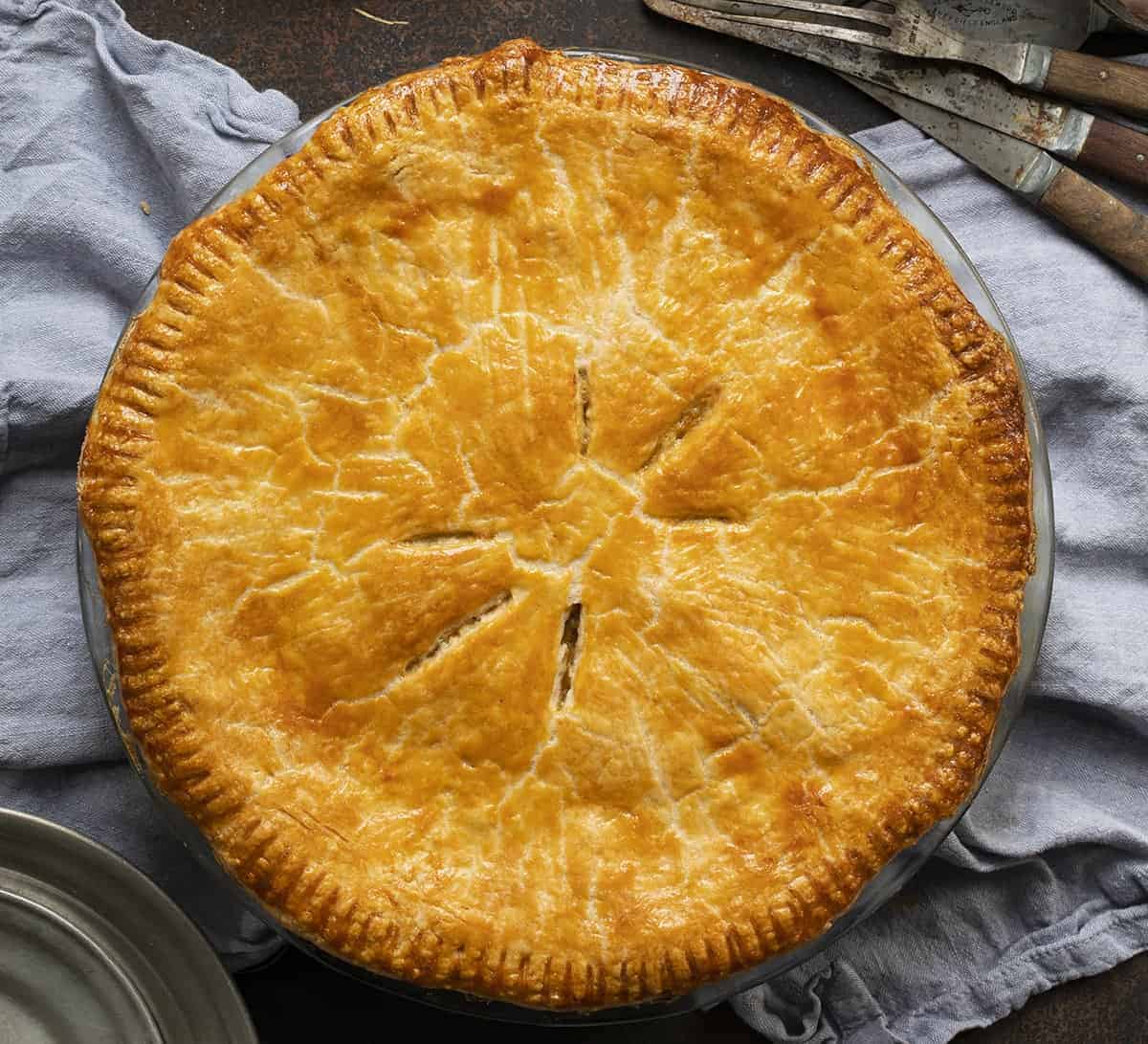
Hot Pies
For a hot pie, divide the chilled dough in half and set it on a flour work surface. Roll out half of the dough to about 1/4 inch thickness and then transfer it to a 9-inch pie pan.
If the hot pie is covered, roll the second half of the dough to about a 1/4-inch thickness. Bake the pie as instructed in the recipe. Store any remaining dough by wrapping tightly in plastic and refrigerating.
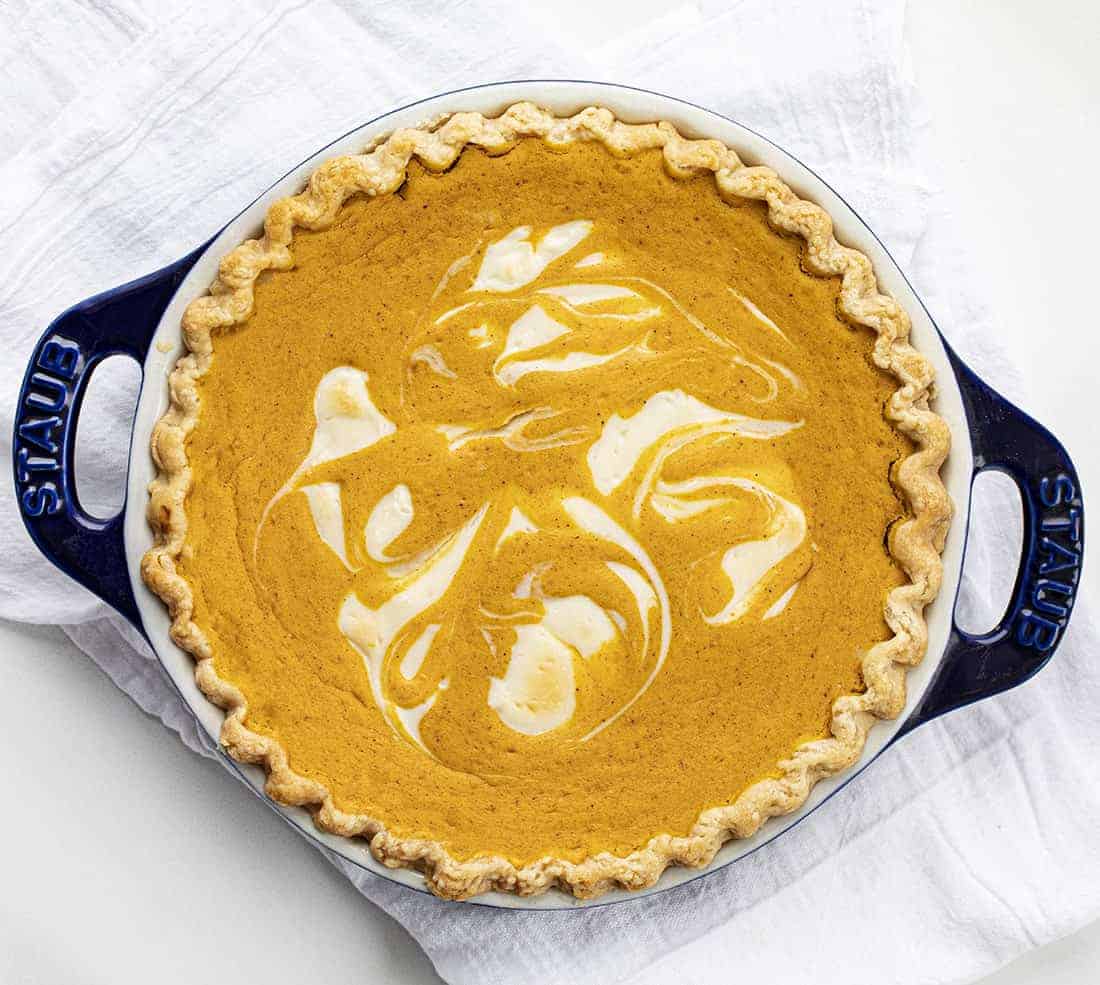
Cold Pies
To use this homemade pie crust for a cold pie, divide the chilled dough in half and set it on a flour work surface. Roll out half of the dough to about 1/4 inch thickness and then transfer it to a 9-inch pie pan. Continue with the instructions of the cold pie recipe you are using.
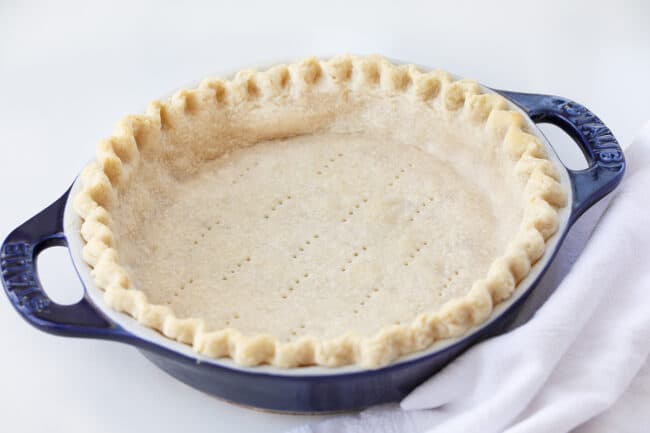
Docking a Crust vs. Pie Weights
Before baking the crust, be sure to dock it. To dock the crust simply means to poke holes in the crust with a fork. This will help the crust to cook more evenly and prevent any pockets or bubbles from forming in the crust. If you dock the crust, you do not need to weigh the crust down.
If you choose to use pie weights (as opposed to docking), loosely fit aluminum foil over the pie dish and weigh it down with pie weights, raw rice, or uncooked beans before baking according to the recipe. The only time I prefer using pie weights is when the filling is runny, as when baking a quiche.
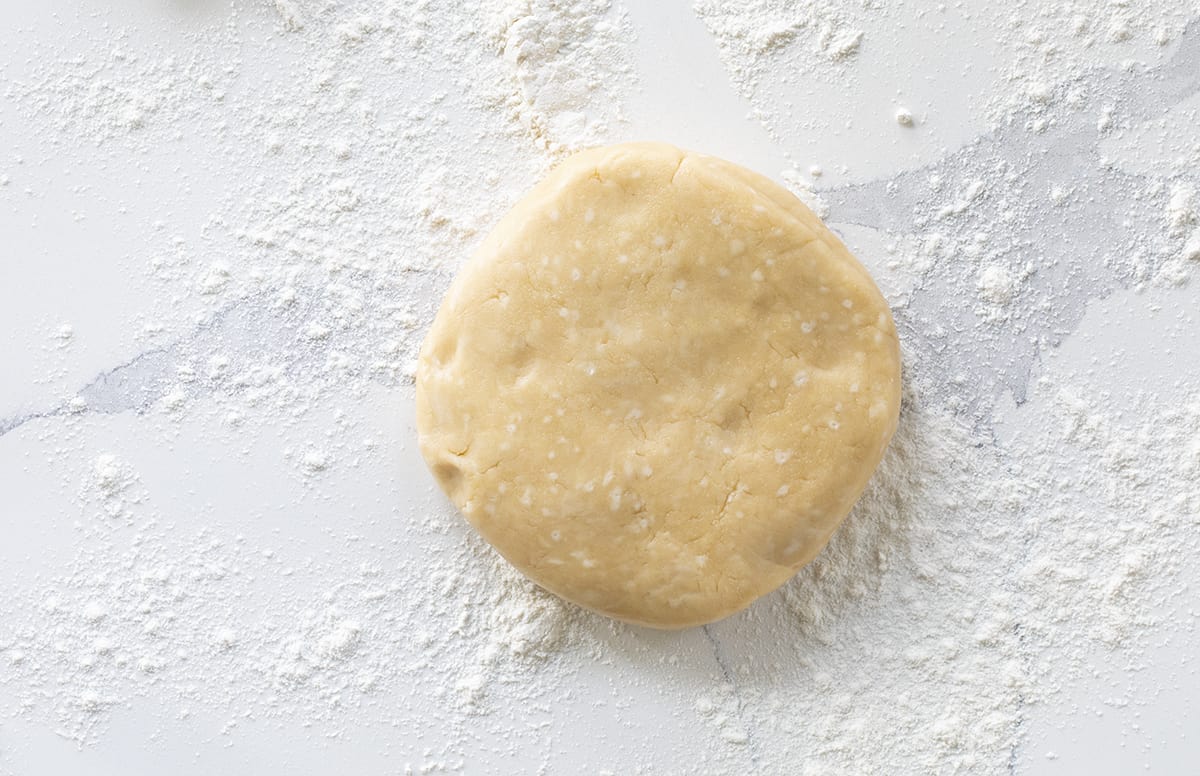
Freezing and Thawing Pie Crust
To Freeze: You can absolutely freeze this pie dough. Shape the dough into a disc, roughly 6-inches in diameter. Lightly dust both sides with flour and then wrap it tightly with plastic wrap. Then either place it in a freezer-safe bag or wrap it tightly in aluminum foil. Be sure to label and date. It should last 6 months in the freezer.
To Thaw: When you are ready to use the pie crust, place it in the refrigerator for 24 hours or overnight. When you are ready to start the pie filling, remove the dough from the refrigerator for about 15 minutes, or while you are preparing the filling.
Recipes with Homemade Pie Crust
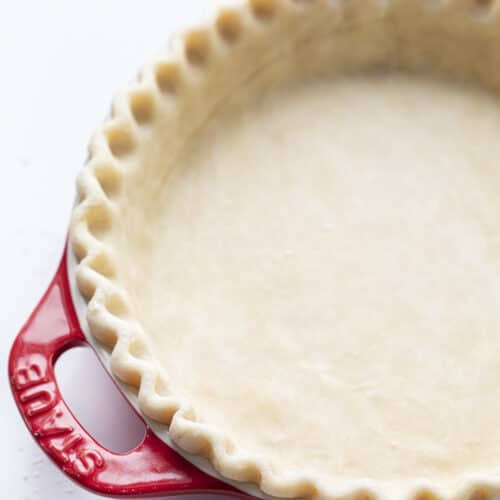
Homemade Pie Crust
Ingredients
- 4 cups (500 g) all-purpose flour
- 1 tablespoon granulated sugar
- 1½ teaspoons kosher salt
- 1½ cups (307.5g) shortening, cubed*
- 1 large egg, beaten
- 1 tablespoon vinegar
- ½ cup (118 g) water
Instructions
- In the bowl of a food processor**, pulse together the flour, sugar, and salt until combined. Add the shortening and pulse until pea-sized crumbs form. Transfer the dough to a large bowl and bring the dough together with a wooden spoon.
- In a small bowl, whisk together the egg, vinegar, and water. Pour over the dough and mix until combined (dough will be sticky). Form the dough into a disc shape and wrap securely with plastic wrap. Chill it in the refrigerator for at least 1 hour before rolling.
Hot Pie
- For a hot pie (e.g. with a filling that needs to be baked), divide the chilled dough in half on a generously floured work surface.
- Roll half of the dough to ¼-inch thick and transfer to a 9-inch pie dish. Repeat with the second half of the dough if the pie is covered.
- Bake as instructed in the recipe. Wrap any remaining dough in plastic wrap and store in the refrigerator.
Cold Pie
- For a cold pie (e.g. with a filling that doesn't need to be baked), divide the chilled dough in half on a generously floured work surface. Roll half of the dough to ¼-inch thick and transfer to a 9-inch pie dish.
- Continue by following the instructions of your cold pie recipe. Wrap any remaining dough in plastic wrap and store in the refrigerator.
Notes
Did you make this recipe?
Thank you for making my recipe! You took pictures, right? Well go ahead and post them on Instagram! Be sure to mention me @iambaker and use the hashtag #YouAreBaker.

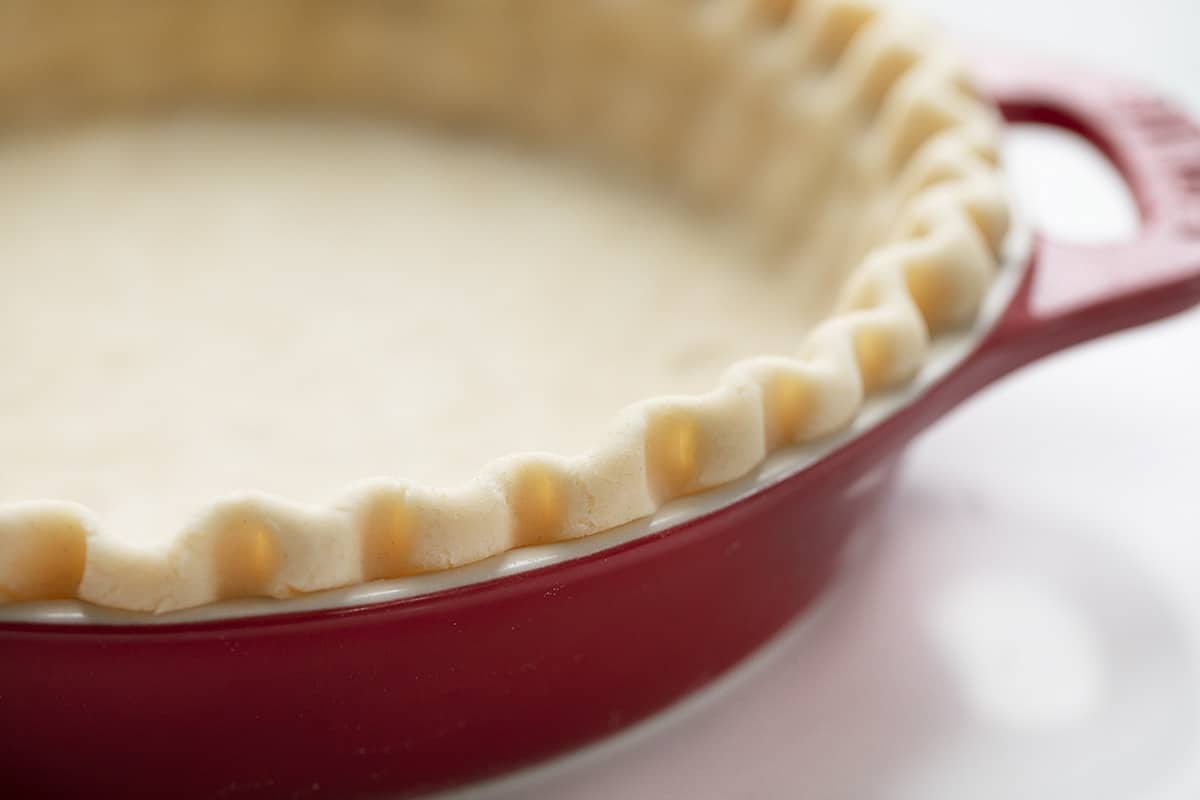
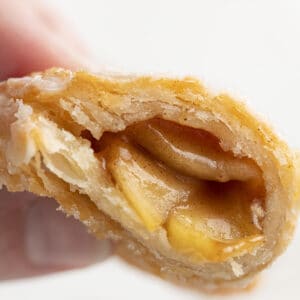
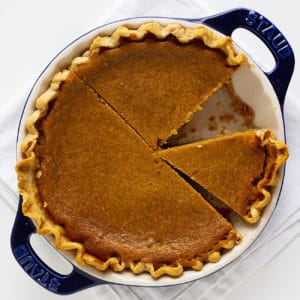
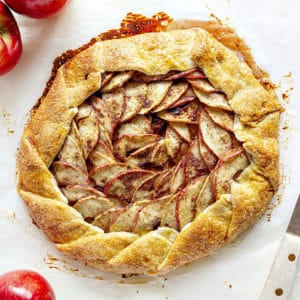
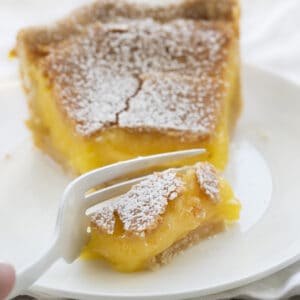
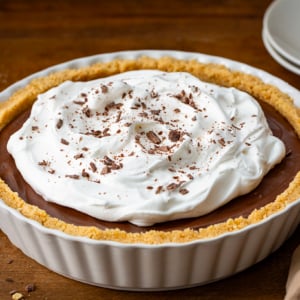










Me encanta como enseñas tus recetas
excelente
I make your cream cheese pumpkin muffins. They are good. My husband loved them.
I make the same but use lard always perfect and flaky
I have made this crust for years.it is a wonderful recipe.
The same one only I use COLD lard. I have never had a fail.
This makes a delicious flaky crust every time! Has been my favorite go-to pie crust recipe forever.🥰
can you substitute Butter for the vegetable shortening.? thanks
Hi, Loretta! I work with iambaker and am happy to help with questions. Yes, you can substitute butter for the shortening. However, it will result in a different textured pie crust (probably not as flaky) since it is only 80% fat vs. 100% fat in shortening. If you have lard, you could use that (also 100% fat), but be sure to use 2 tablespoons less of lard for every one cup of shortening. I hope this helps, and have a great day!
I will definitely try this! Your crust looks beautiful.
this is the no fail pie crust my mother used I have made hundreds of pies with this recipe easy to roll and a sturdy crust. But i have now found a full butter recipe that is easy to manage Butter does taste better 🙂